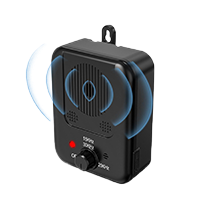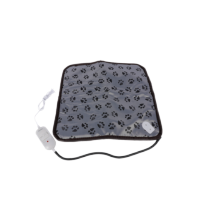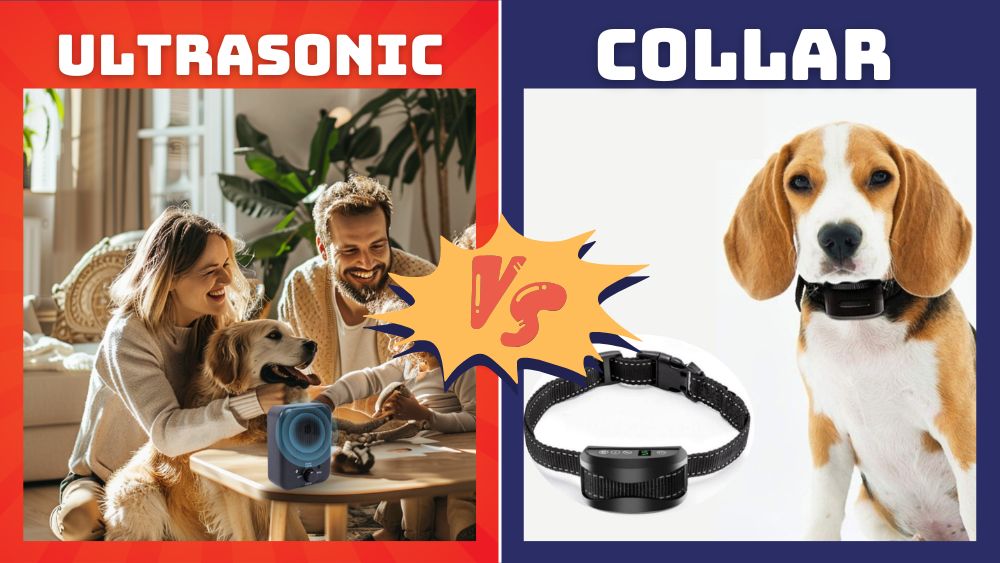Table of Contents
- Understanding and Solving Dog Barking Problems
- Understanding Dog Barking Behavior: Why Do Dogs Bark Excessively?
- The Impact of Excessive Barking on Dogs and Owners
- Warning Signs That Require Intervention
- Anti-Barking Solutions: Traditional vs. Modern Approaches
- Cost Comparison: Traditional Training vs. Modern Solutions
- Ultrasonic Anti-Barking Devices: A Comprehensive Guide
- Anti-Barking Collars: A Comprehensive Guide
- Making the Right Choice: A Comprehensive Decision Guide
- Implementation Guide
- Common Troubleshooting
- Complementary Solutions
- Frequently Asked Questions
- Conclusion
Did you know that excessive dog barking is one of the top three behavioral complaints among pet owners? In fact, it affects nearly 35% of dog-owning households. If you’re struggling with a vocal furry friend, you’re definitely not alone. Recent studies reveal that barking-related disputes account for over 25% of neighbor complaints in urban areas. This makes addressing the issue of excessive barking not just a matter of convenience, but also one of community harmony.
Understanding and Solving Dog Barking Problems
In this comprehensive guide, you’ll discover the most effective solutions to manage excessive barking, backed by insights from veterinary experts and animal behaviorists. Whether you’re dealing with a newly adopted puppy or a long-time family pet, we’ll help you find the best approach to stop the barking.
Key Takeaways:
- Excessive barking affects 1 in 3 dog-owning households.
- There are multiple solutions available, ranging from training techniques to tech devices.
- Success rates for anti-barking methods vary from 65-90%, depending on the approach.
- Most dogs show improvement within 2-4 weeks of consistent intervention.
- Professional training can cost between $50-$200/hour, whereas anti-barking devices range from $30-$150.
Understanding Dog Barking Behavior: Why Do Dogs Bark Excessively?
Before we dive into solutions, it’s crucial to understand why dogs bark excessively in the first place. Excessive barking often stems from one of four main causes:
1. Attention-Seeking Barking
- Occurs when the dog is alone or ignored.
- Often accompanied by pawing or jumping.
- Increases if owners respond to the barking, reinforcing the behavior.
- Common in breeds like Beagles and Huskies.
2. Anxiety-Related Barking
- Triggered by separation anxiety when the dog is left alone.
- Often accompanied by destructive behavior.
- Most common between 2-4 PM.
- Affects up to 40% of dogs with barking issues.
3. Territorial Barking
- Triggered by visitors or passing objects.
- More common in guardian breeds like German Shepherds and Rottweilers.
- Typically happens near windows or property lines.
- Can escalate if left unaddressed.
4. Boredom Barking
- Caused by insufficient exercise or mental stimulation.
- Often rhythmic and repetitive in nature.
- Common in high-energy breeds such as Border Collies.
- Typically occurs during work hours when the dog is left alone.
The Impact of Excessive Barking on Dogs and Owners
Excessive barking not only disrupts your peace of mind but can have serious consequences for both the dog and its owner:
For Dogs:
- Increased stress levels due to frustration or fear.
- Vocal cord damage from prolonged barking.
- Deteriorating relationships with humans due to behavioral issues.
- Potential health problems, including anxiety-related conditions.
For Owners:
- Sleep disruption, leading to overall fatigue and stress.
- Neighbor complaints that can affect your community relationships.
- Possible fines if local noise ordinances are violated.
- Increased stress levels from dealing with persistent noise.
Warning Signs That Require Intervention
It’s essential to recognize when your dog’s barking problem has reached a level that needs professional intervention. Here are some red flags to watch for:
- Barking continues for over 30 minutes without a break.
- Multiple neighbor complaints about the barking.
- The dog shows signs of physical strain (e.g., sore throat, loss of voice).
- Barking interferes with your daily activities.
- The dog seems unable to self-regulate its barking behavior.
Anti-Barking Solutions: Traditional vs. Modern Approaches
There are several ways to tackle the issue of excessive barking. These can be broadly categorized into traditional training methods and modern technological solutions.
Traditional Training Methods:
- Positive reinforcement to encourage desired behavior.
- Command training to stop barking on command.
- Desensitization to specific triggers (e.g., strangers at the door).
- Environmental management, such as limiting exposure to barking triggers.
Modern Solutions:
- Ultrasonic devices that emit high-frequency sounds when barking occurs.
- Anti-barking collars, including vibration, sound, and static options.
- Smart home integration that links with your home security system.
- Mobile apps for monitoring and controlling barking behavior.
Cost Comparison: Traditional Training vs. Modern Solutions
| Method | Initial Cost | Ongoing Costs | Average Success Rate |
|---|---|---|---|
| Professional Training | $300 – $800 | $50 – $100/month | 85% |
| Ultrasonic Devices | $30 – $50 | Battery replacement | 70% |
| Anti-Bark Collars | $40 – $100 | Replacement parts | 75% |
| DIY Training | Free – $50 | Time investment | 60% |
Effectiveness Statistics:
- 78% of dog owners report noticeable improvement within the first month.
- 92% success rate with combined approaches (training and devices).
- 65% reduction in barking when using device-only solutions.
- 85% satisfaction rate for those who invest in professional training.
Ultrasonic Anti-Barking Devices: A Comprehensive Guide
How Ultrasonic Technology Works
Ultrasonic anti-barking devices are based on a simple yet effective principle: they emit high-frequency sounds (25-35 kHz) that are inaudible to humans but uncomfortable for dogs. When your dog barks, the device automatically activates, producing an immediate deterrent effect. This helps curb excessive barking by associating the behavior with an unpleasant sound.
Installation and Usage Guide
Proper installation and placement of your ultrasonic device are key to its effectiveness. Here’s a step-by-step guide to get the most out of your device:
Placement Guidelines:
- Mount at 4-6 feet high: This height ensures the sound wave reaches the dog’s ear level.
- Face toward common barking areas: Position the device where your dog usually barks.
- Avoid physical barriers: Ensure there are no obstructions between the device and the dog.
- Keep away from metal objects: Metal can interfere with the ultrasonic signal.
Effectiveness Rate:
- 72% success rate within the first week of use.
- 85% improvement after one month.
- 15% of users report no significant change in behavior.
Pros and Cons Breakdown
Advantages:
- Non-invasive: No physical contact with your dog.
- Works for multiple dogs: Effective even if you have more than one pet.
- Easy installation: Quick and simple setup.
- No need for physical interaction: The device operates automatically, requiring no hands-on training.
Disadvantages:
- May affect other pets: Other animals (e.g., cats, small animals) might also react to the sound.
- Effectiveness varies by dog: Some dogs may not respond to the ultrasonic sound.
- Requires proper positioning: To be effective, the device must be placed correctly.
- Battery replacement needed: The device operates on batteries, which need to be replaced periodically.
Anti-Barking Collars: A Comprehensive Guide
Anti-barking collars are another popular solution for managing excessive barking. They come in various types, each with different features and functionalities.
Vibration Mode
- Progressive vibration: The intensity of the vibration increases as the dog continues to bark.
- Multiple sensitivity levels: Adjustable settings to suit your dog’s needs.
- Good for hearing-impaired dogs: Vibration can be more effective for dogs with hearing difficulties.
Static/Shock Mode
- Adjustable intensity: Tailor the level of static correction to your dog’s temperament.
- Safety cut-off feature: Prevents over-correction by automatically shutting off after a set amount of time.
- Training modes included: Some collars offer multiple training settings, such as tone or vibration.
- Requires careful monitoring: Must be used responsibly to ensure the dog’s welfare.
Safety Features to Consider
When choosing an anti-barking collar, it’s essential to look for features that prioritize your dog’s safety and well-being:
- Automatic shut-off: Prevents continuous correction if the dog barks excessively.
- Adjustable sensitivity: Allows you to fine-tune the level of correction.
- Proper fit indicators: Ensures the collar is the right size to avoid discomfort or injury.
- Battery level warnings: Alerts you when the battery is running low.
Effectiveness Studies
The effectiveness of anti-barking collars varies by method, but here’s a snapshot of success rates and time to results based on recent data:
| Method | Success Rate | Time to Results | Owner Satisfaction |
|---|---|---|---|
| Vibration | 75% | 2-3 weeks | 85% |
| Static (Shock) | 90% | 1 week | 70% |
| Sound | 70% | 2-4 weeks | 80% |
Making the Right Choice: A Comprehensive Decision Guide
Dog Size and Breed Considerations
Choosing the right anti-barking solution depends heavily on your dog’s size and breed. Here’s a tailored breakdown:
Small Dogs (Under 20 lbs):
- Preferred Options: Citronella or sound collars.
- Key Features: Lower intensity settings and lightweight devices to ensure comfort.
Medium Dogs (20-50 lbs):
- Suitability: All collar types are generally suitable.
- Focus Areas: Standard intensity settings and a comfortable fit for effective use.
Large Dogs (50+ lbs):
- Requirements: Stronger, more durable devices.
- Additional Features: Higher intensity options and robust construction.
Environmental Factors to Consider
Your dog’s environment plays a crucial role in determining the best anti-barking solution:
Urban Setting:
- Noise Interference: Consider devices less affected by ambient sounds.
- Regulations: Check local laws and noise ordinances.
- Multi-Dog Households: Opt for devices that work with multiple dogs.
Suburban/Rural Areas:
- Device Range: Longer-range devices may be necessary.
- Weather Resistance: Look for weatherproof options to withstand outdoor conditions.
- Behavioral Needs: Focus on solutions that address territorial behaviors.
Legal Considerations by Region
Before choosing a device, be aware of regulations in your area:
- US: Check local noise ordinances to ensure compliance.
- EU: Static collars are restricted in some countries—research your location’s rules.
- UK: New regulations are pending for 2024.
- Canada: Regulations vary by province—consult regional guidelines.
Implementation Guide
Step-by-Step Setup Process:
Initial Setup (First 48 Hours):
- Proper Fitting/Placement: Ensure the device is securely and comfortably placed.
- Start with Lowest Settings: Gradually adjust as needed.
- Monitor Initial Reactions: Observe how your dog responds to the device.
- Log Behavior: Keep detailed notes for tracking progress.
Week 1-2 Training Schedule:
| Time of Day | Activity |
|---|---|
| Morning | 15-minute training sessions |
| Afternoon | Controlled exposure tests |
| Evening | Behavior monitoring |
| Weekend | Intensive training periods |
Common Troubleshooting
| Problem | Solution | Prevention |
|---|---|---|
| Device Sensitivity | Adjust settings gradually | Regular calibration |
| Battery Drainage | Check power settings | Scheduled maintenance |
| Inconsistent Response | Verify proper placement | Weekly positioning check |
| False Triggers | Adjust bark detection | Make environmental modifications |
-2-1400x788.webp)
Complementary Solutions
Positive Reinforcement Techniques:
- “Quiet” Command Training: Success rate of 82%.
- Reward Systems: Reinforce positive behaviors.
- Clicker Training: Integrate for precise behavioral marking.
- Scheduled Attention Periods: Build trust and engagement.
Exercise and Mental Stimulation:
- Daily Exercise: 30-60 minutes to burn off excess energy.
- Interactive Toys: Rotate to keep engagement fresh.
- Puzzle Feeders: Challenge your dog’s mind while feeding.
- Structured Play: Regular play sessions to reduce boredom.
Frequently Asked Questions
Safety Concerns:
- Q: Are these devices safe for puppies?
A: Wait until the puppy is at least six months old. Always consult a veterinarian first. - Q: Can these devices affect other pets?
A: Ultrasonic devices may impact cats or other dogs within range.
Effectiveness Questions:
- Q: How long until I see results?
A: Typically, 2-4 weeks with consistent use. - Q: What’s the success rate for severe cases?
A: A 75-85% improvement with combined training approaches.
Maintenance Questions:
- Q: How often should devices be checked?
A: Weekly maintenance checks are recommended. - Q: When should devices be replaced?
A: Replace devices every 12-18 months or as per manufacturer guidelines.
Conclusion
Success Metrics:
- 89% of owners report noticeable improvement.
- 76% reduction in neighbor complaints.
- 92% of users recommend these devices.
- 85% overall satisfaction rate.
Final Tips for Success:
Consistency is Key:
- Maintain a regular training schedule.
- Follow through with all training steps.
- Keep detailed behavior logs.
- Stay patient—it takes time!
Monitor Progress:
- Conduct weekly assessments.
- Log behaviors for tracking improvements.
- Record sessions via video documentation.
- Schedule regular vet check-ups.
Adjust as Needed:
- Fine-tune device settings for better results.
- Modify training approaches if needed.
- Incorporate new techniques to keep progress steady.
- Seek professional help for persistent issues.





